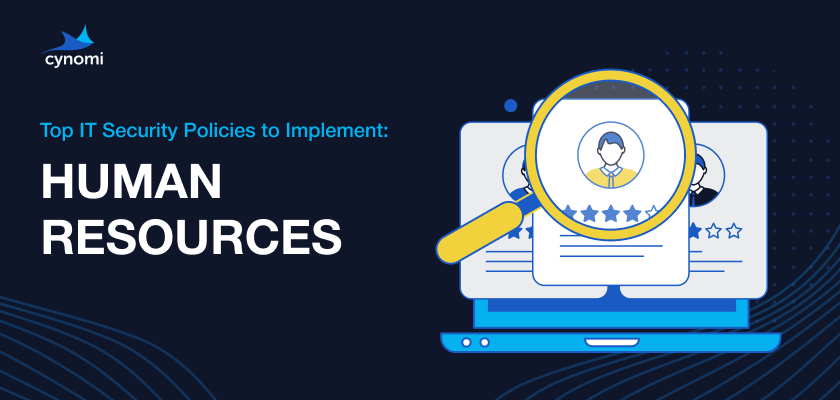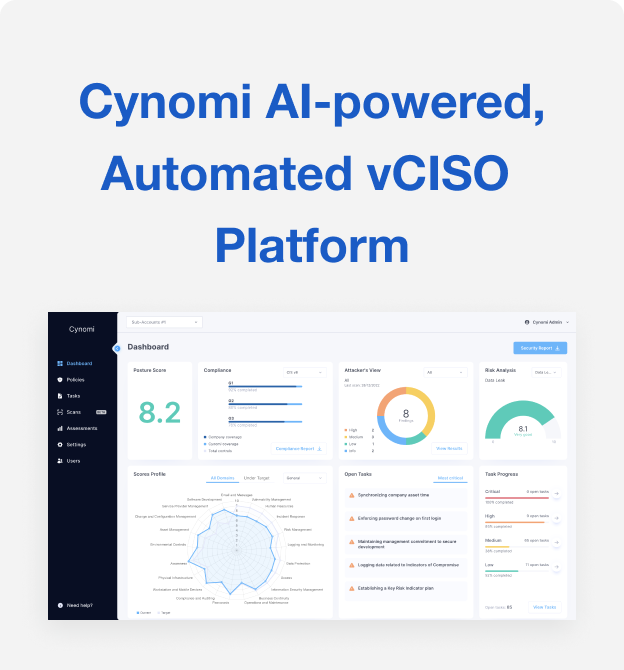Top IT Security Policies to Implement: Human Resources

Employees constitute an important organizational cybersecurity protection layer. On the one hand, they can detect and warn against suspicious events in real time, while on the other, they may constitute vulnerabilities, which may lead to cyber-events, either by way of error, malicious intent, or by being misled by attackers. As the 2023 Verizon Data Breach Investigations Report indicates, 74% of security breaches involve a human factor, encompassing manipulative tactics, inadvertent errors, or misuse.
Developing a human resources cybersecurity policy and establishing associated protocols is a fundamental task for any organization’s cyber resilience. The purpose of an HR policy is to provide HR and IT with the best practices for securing information by conducting security procedures prior to hiring, while onboarding, and upon role change or termination.
The formulation of this policy often demands considerable effort, as each organization must craft guidelines that specifically suit its operational framework, legal mandates, and cybersecurity risk thresholds.
In this article, we will delve into the significance of a comprehensive HR cybersecurity policy, detail its core tenets, and offer insights from experts in the field.
Why Is This Policy Important?
The significance of a Human Resources security policy is paramount. This policy is vital for ensuring a holistic approach to managing potential cyber threats. By defining and enforcing cybersecurity expectations for employees, and governing access throughout an employee’s tenure, the policy effectively manages potential vulnerabilities.
Moreover, a strong HR cybersecurity policy promotes a security-conscious organizational culture, minimizing risks and enhancing the overall cybersecurity posture.
The Attacks This Policy Help Protect Against
A comprehensive HR cybersecurity policy shields an organization from specific threats targeting HR data and processes. This includes insider threats where disgruntled employees or ex-employees attempt to misuse or leak sensitive HR data out of revenge or for personal gain. The policy also guards against targeted spear phishing campaigns, wherein attackers, having studied the organization’s hierarchy, pose as high-ranking officials to solicit confidential information. Additionaly, the HR cybersecurity policy offers protection against baiting attacks, where cybercriminals might use job offers or resumes laden with malware, aiming to exploit the recruitment processes.
The Scope of This Policy
The HR policy applies to all company employees – this includes full-time, part-time, and temporary employees, contractors and consultants.
Top Controls in This Policy
The controls listed below are the basic components of a cybersecurity human resources policy. By following them, you can improve your origination’s security:
- Employment Life Cycle: Information security should be maintained throughout the employment life cycle. Perform candidate background checks prior to employment and ahead of issuing any access to company systems or data. Ensure that when employees are reassigned or their role changes, their access credentials, and authentications are reviewed and adjusted. Upon the termination of individual employment, ensure that all access credentials and authenticators are revoked.Why?The Employment Life Cycle policy is pivotal for HR cybersecurity because it systematically governs an employee’s access to company resources from onboarding to offboarding. This ensures maintenance of role-appropriate data permissions during transitions, aids in meeting regulatory data requirements, and provides a consistent framework to manage the ever-evolving cyber threats throughout an employee’s tenure.
- Disciplinary actions: Disciplinary actions are sanctions that enforce regulations, policies, and standards in the case of a security breach. These actions range from verbal and written warnings for minor infractions to suspension and mandatory training for repeated or serious breaches. For the gravest violations, employees may face termination or legal action. The disciplinary actions are designed to maintain an environment where all employees understand and respect the importance of cybersecurity in preserving the company’s integrity and reputation.Make sure that the organization has an approved sanction process for cyber policy breaches.Why?The aspect of disciplinary actions within an HR security policy serves as a deterrent and a corrective measure to ensure compliance with the organization’s cybersecurity regulations. These actions underscore the gravity of security protocols and demonstrate an organization’s commitment to enforcing its cybersecurity standards. Without such actions, the efficacy of security measures could be compromised, leaving the organization vulnerable to breaches.
- Contractual Cybersecurity Clauses: Every employment contract must include cybersecurity-related clauses that clarify and legally bind employees to company cybersecurity regulations and rules that apply before, during, and after the employment period.Ensure that HR incorporates the rules and procedures of a clean desk and unattended user-equipment protection in employee and third-party contracts. Ensure that employment contracts include the rules for acceptable and unacceptable behavior for information and system usage, security, and privacy in employee and third-party contracts. Add a Non-Disclosure Agreement (NDA) or a similar confidentiality agreement that reflects the demands for protecting data and operational details, for both employee and third-party contracts.Ensure that all post-employment requirements for protecting sensitive company information are legally binding and incorporated into employee and third-party contracts.Verify that all employment contracts allow the company the ability to investigate employee misconduct when there is reasonable evidence of policy violation or any information security breach.Why?Contractual cybersecurity clauses are vital to an organization’s HR cybersecurity policy because they explicitly define and enforce cybersecurity expectations for employees and third parties. By incorporating these clauses, organizations ensure that employees and other stakeholders are legally bound to adhere to cybersecurity standards, thus minimizing risks and protecting the organization’s digital assets and reputation. Without these provisions, ambiguity could leave the organization exposed to increased vulnerabilities.
3 CISO Takeaways
- Continuous Training: continuous cybersecurity training sessions should be integrated into an employee’s lifecycle — from onboarding to exit. This ensures that employees remain updated on current best practices and the latest threats. For example, during onboarding, an initial training can familiarize new hires with company protocols, while annual refreshers can update existing staff on new threats and policies.
- Access Management: At different stages of an employee’s tenure, their access rights to company data and systems might need to be adjusted. For instance, a promotion might necessitate access to new databases, while a departmental transfer might require revoking certain permissions. Most crucially, when an employee exits the company, immediate action should be taken to revoke all their access rights, ensuring they can no longer access or modify company data.
- HR & IT Collaboration: Bridge HR and IT from the outset. A unified approach ensures swift handling of security concerns throughout an employee’s lifecycle.
The measures and guidelines highlighted in this post can aid in safeguarding your organization’s infrastructure and assets. Given that cybersecurity isn’t a “universal solution”, it’s advisable to liaise with your CISO, vCISO, MSSP, or cybersecurity expert before adopting the recommended measures. For a comprehensive HR Cybersecurity Policy tailored to your enterprise’s requirements, you are welcome to try Cynomi’s vCISO Platform.





